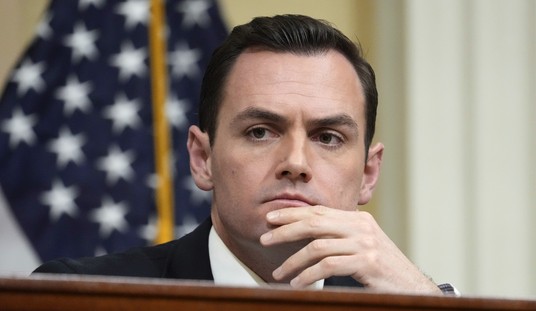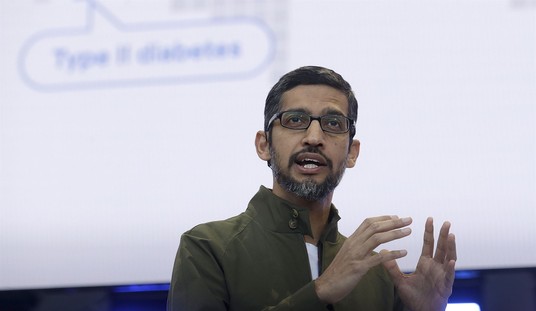I could have added this to the earlier ObamaCare post, but this kind of cash really should pay for its own post, no? It obviously doesn’t pay for a working website — not for the government, anyway — but it’s good for a web page with limited interactive capabilities. Limited? Who am I kidding? You probably can’t leave comments on the UnicornHealthCare.gov (via Weasel Zippers and Instapundit):
It’s been one full week since the flagship technology portion of the Affordable Care Act (Obamacare) went live. And since that time, the befuddled beast that is Healthcare.gov has shutdown, crapped out, stalled, and mis-loaded so consistently that its track record for failure is challenged only by Congress.
The site itself, which apparently underwent major code renovations over the weekend, still rejects user logins, fails to load drop-down menus and other crucial components for users that successfully gain entrance, and otherwise prevents uninsured Americans in the 36 states it serves from purchasing healthcare at competitive rates – Healthcare.gov’s primary purpose. The site is so busted that, as of a couple days ago, the number of people that successfully purchased healthcare through it was in the “single digits,” according to the Washington Post.
The reason for this nationwide headache apparently stems from poorly written code, which buckled under the heavy influx of traffic that its engineers and administrators should have seen coming. But the fact that Healthcare.gov can’t do the one job it was built to do isn’t the most infuriating part of this debacle – it’s that we, the taxpayers, seem to have forked up more than $634 million of the federal purse to build the digital equivalent of a rock.
The exact cost to build Healthcare.gov, according to U.S. government records, appears to have been $634,320,919, which we paid to a company you probably never heard of: CGI Federal. The company originally won the contract back in 2011, but at that time, the cost was expected to run “up to” $93.7 million – still a chunk of change, but nothing near where it ended up.
If you’re wondering, CGI Federal isn’t much of a player in political fundraising. A review of FEC records at OpenSecrets shows a total of slightly under $65,000 in donations over three cycles, mostly to an industry PAC. The other donations get split between Republicans and Democrats, including smallish soft-money checks to the party committees and smallish hard-money checks to candidates. Both Mitt Romney and Barack Obama got cash from CGI Federal employees, so the story isn’t really crony capitalism.
Instead, this looks like yet another case of government incompetence. The amount of money spent on this system was seven times its initial estimate of just two years ago. Mull that over for a while, and then think of what that means when multiplied across the entire ObamaCare structure. The amount of cash sunk into this brick exceeds that spent on Solyndra — by about 20%.
This is what happens when government takes over what should be private-sector tasks. No private-sector organization would have tolerated a $634 million web-portal project in the first place, nor would it have tolerated a three-and-a-half year rollout. A firm competing in the private sector would have tested its software before release to make sure it at least functioned, well enough to sell the product if nothing else. Every step of the path for this exchange, including its price tag, reminds us why we don’t want government eclipsing the private sector, if on no other basis than rational use of resources.
Update: Now the Washington Post tells us:
Problems with the federal government’s new health-care Web site have attracted legions of armchair analysts who speak of its problems with “virtualization” and “load testing.” Yet increasingly, they are saying the root cause is not simply a matter of flawed computer code but rather the government’s habit of buying outdated, costly and buggy technology.
The U.S. government spends more than $80 billion a year for information-technology services, yet the resulting systems typically take years to build and often are cumbersome when they launch. While the error messages, long waits and other problems with www.healthcare.gov have been spotlighted by the high-profile nature of its launch and unexpectedly heavy demands on the system, such glitches are common, say those who argue for a nimbler procurement system.
They say most government agencies have a shortage of technical staff and long have outsourced most jobs to big contractors that, while skilled in navigating a byzantine procurement system, are not on the cutting edge of developing user-friendly Web sites.
These companies also sometimes fail to communicate effectively with each other as a major project moves ahead. Dozens of private firms had a role in developing the online insurance exchanges at the core of the health-care program and its Web site, working on contracts that collectively were worth hundreds of millions of dollars, according to a Government Accountability Office report in June.
Again, the lesson here is easy: stop the federal government from eclipsing the much more efficient private sector.








Join the conversation as a VIP Member